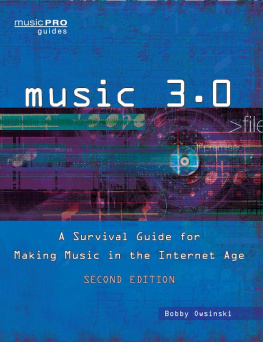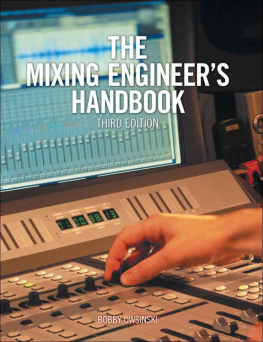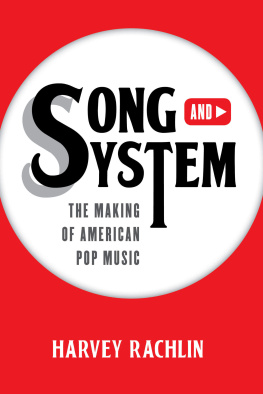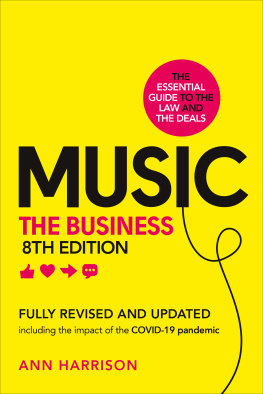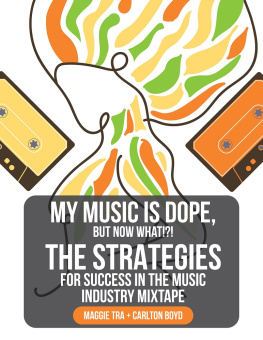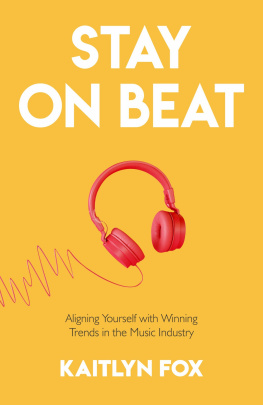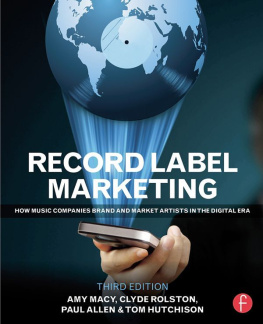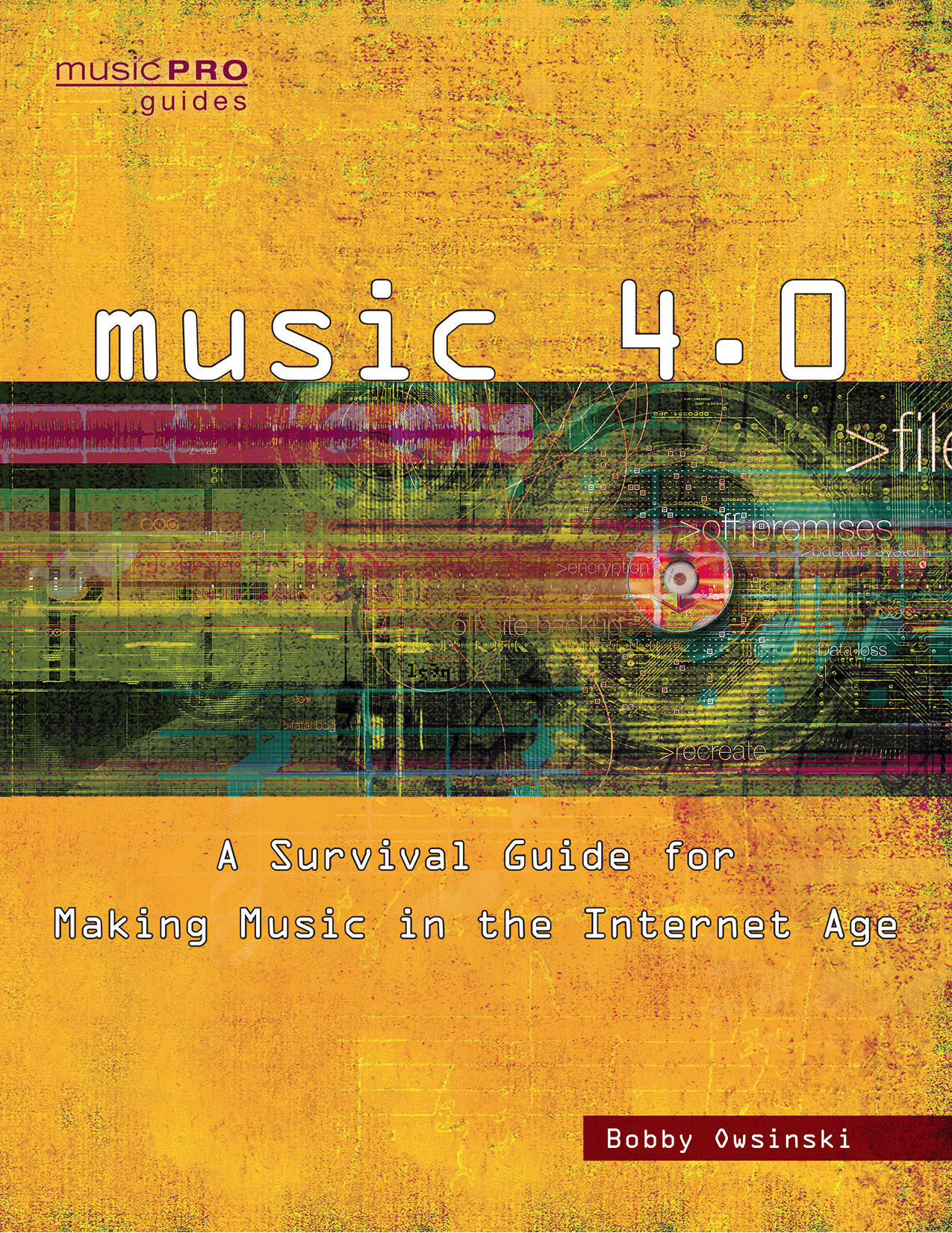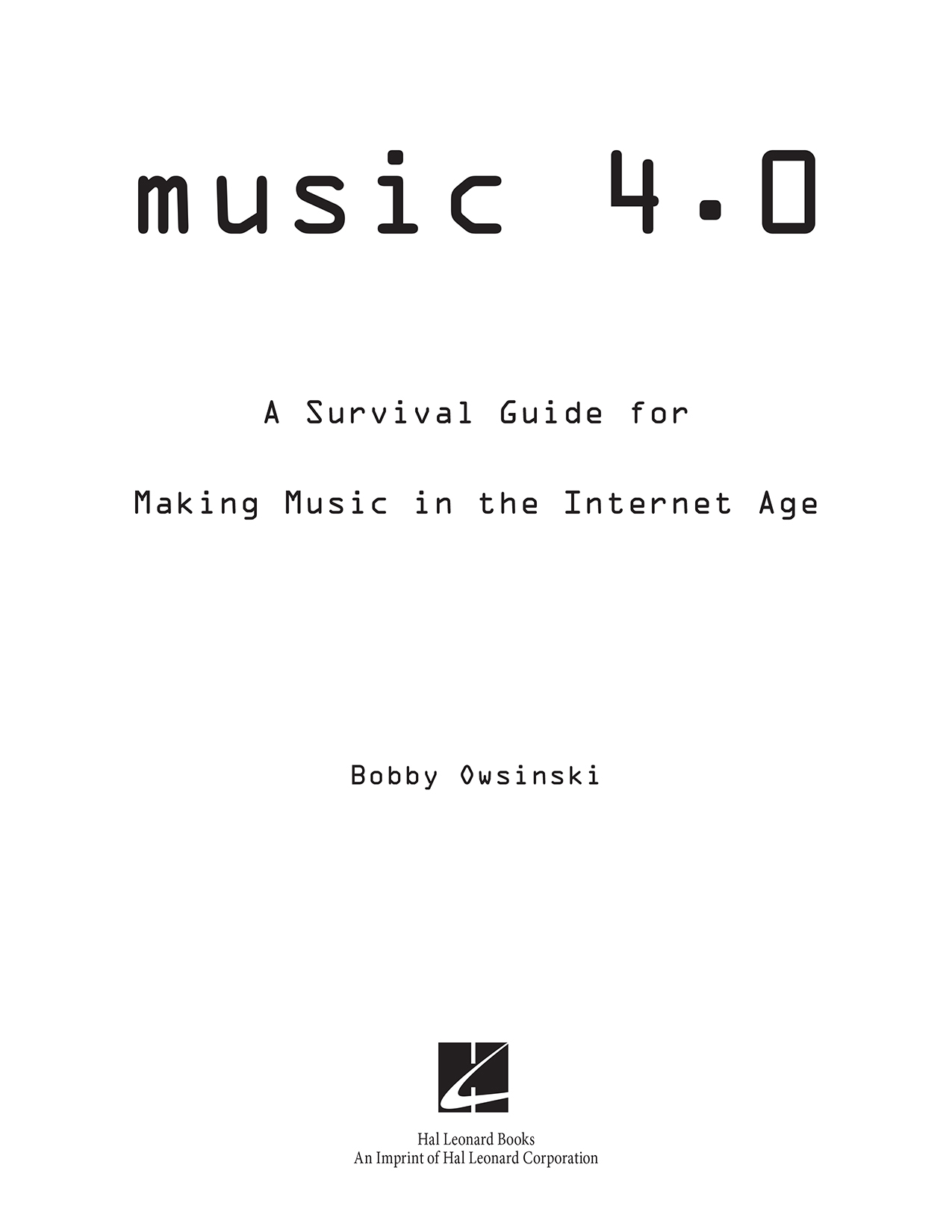Copyright 2014 by Bobby Owsinski
All rights reserved. No part of this book may be reproduced in any form, without written permission, except by a newspaper or magazine reviewer who wishes to quote brief passages in connection with a review.
Published in 2014 by Hal Leonard Books
An Imprint of Hal Leonard Corporation
7777 West Bluemound Road
Milwaukee, WI 53213
Trade Book Division Editorial Offices
33 Plymouth St., Montclair, NJ 07042
Printed in the United States of America
Book design by Stephen Ramirez
Book composition by Bill Gibson
Library of Congress Cataloging-in-Publication Data
Owsinski, Bobby.
Music 4.0 : a survival guide for making music in the Internet age / Bobby Owsinski.
pages cm. -- (Music pro guides)
ISBN 978-1-4803-5514-9 (alk. paper)
1. Music trade--Technological innovations. 2. Music trade--Computer network resources. 3. Music and the Internet. 4. Internet marketing. I. Title.
ML3790.O9683 2014
780.68'8--dc23
2014006752
www.halleonardbooks.com
Contents
Welcome to the third edition of Music 3.0: A Survival Guide for Making Music in the Internet Age . As youve probably noticed, its now called Music 4.0 , and thats because the industry has continued to change at a record pace and has now evolved to the next level of evolution.
I originally decided to write this book precisely because the music world was changing so much. Oh, its always been evolving, but the speed of the industrys remodeling has increased at a rate previously unimagined. It would be nice to say that this change is brought about by a leap in musical creativity, but thats not the case. This metamorphosis has been caused by technology.
The Internet has brought us so many conveniences and so many new ways of living our lives, having fun, and communicating with those we know and dont know that we sometimes dont appreciate how quickly its all come about. Its also brought us so many choices in the way we make music and ultimately make it available that, unfortunately, its also left most artists and music makers dazed and confused with all the seemingly endless options. What should I do? How can I do it? Who are my customers and fans? What do they want from me? How do I reach them? How do I take advantage of all these choices? How am I going to make money? These are all questions that an artist might have had previously, but the relevancy and urgency have only increased with the current times.
I came up with the concept of the original Music 3.0 edition after writing a post on my production blog (bobbyowsinski.blogspot.com; theres now also music3point0.blogspot.com) in which I discussed the current woes of not only the music business, but especially the artists who are just trying to do the thing they love mostplay music. I know that some artists have grand ambitions to be the next Justin Timberlake, Christina Aguilera, Jay-Z, Coldplay, or any number of best-selling acts. Sometimes artists crave fame a lot more than they yearn to make the kind of music that will attract and keep fans for the long term. These musicians seem to be the ones that burn out of the business the fastest, once they realize how much work they really have to put in.
The vast majority of artists arent like that. They love what they do and are supremely happy when they find others that love what they do too. For them, just being able to make music without having to work a job on the side is considered a success. If that describes you, I hear you and feel you. Reading this book might not get you there, but it can set you on your way. Knowledge is powerand that phrase has never been truer than in the current music stage that I call Music 4.0. The possibilities for what can happen to your music are endless, but youve got to know how to take advantage of those possibilities before you can put them into action.
Throughout this book Ill refer to Music 4.0 as M4.0, or M four oh. It has a nice ring and rolls off the tongue well. But youre probably wondering, How did we get to M4.0? What were M1.0, 2.0, and so on? While well go over all that in depth in Chapter 1, heres how I briefly delineate the various stages of the music business.
Music 0.5: The embryonic stage of the music business predating recorded music, where the product was limited to sheet music and piano rolls, and the song was much more important than the artist.
Music 1.0: The first generation of the music business as we know it today, in which the product was vinyl records, the artist had no direct contact with the record buyer, radio was the primary source of promotion, the record labels were run by record people, and records were bought from retail stores.
Music 1.5: The second generation of the music business, in which the product was primarily CDs, labels were owned and run by large conglomerates, MTV caused the labels to shift from artist development to image development, radio was still the major source of promotion, and CDs were purchased from retail stores.
Music 2.0: The third generation of the music business, which signaled the beginning of digital music and during which piracy ran rampant due to peer-to-peer networks. The industry, however, took little notice, since CD sales were still strong from radio promotion.
Music 2.5: The fourth generation of the music business, in which digital music became monetized thanks to iTunes and, later, others such as Amazon MP3. CD sales plunged, the music industry contracted, and retail stores closed.
Music 3.0: The fifth generation of the music business, in which the artist could communicate, interact, market, and sell directly to the fan. Record labels, radio, and television became somewhat irrelevant, and single songs were purchased more often than albums.
Music 3.5: The sixth generation of the music business, where YouTube and other online video platforms became the new radio, and the digital side of the business began to slowly morph from one of downloads to streaming.
Music 4.0: The generation of the music business that were now entering, where streaming becomes the preferred music delivery method for the consumer, which makes it profitable on a wide scale and increases revenue for artists, songwriters, publishers, and labels.
This book is an aggregation of concepts about the new music business in the so-called Internet age, which Ive been following for some time. It contains the guiding insights of some of the brightest minds in the music industry about where the industry has been, where it is now, and where its going. With so much information currently available, I wanted to do what I do bestcollect it, organize it, and present it in a way that everyone can understand.
As in my other books, Ive sought out the help of some of the most respected voices that are on the cutting edge of different aspects of the music business, and Ive included their interviews at the end of this book and incorporated selected quotes along the way. The interviews are fun and informative, and conducting them was one of the most enjoyable aspects of writing this book.
Let me briefly introduce these respected experts to you:
Dae Bogan has considerable experience in both music and social media marketing, starting out in event production for major brands such as Chipotle, Dell, Blackberry, Virgin Mobile, and Def Jam, then as vice president of marketing for Shiekh shoes and their Shiekh music artists program. His current company, Chazbo Music, provides in-store video music entertainment services by programming custom-curated channels for businesses, music, and lifestyle.


